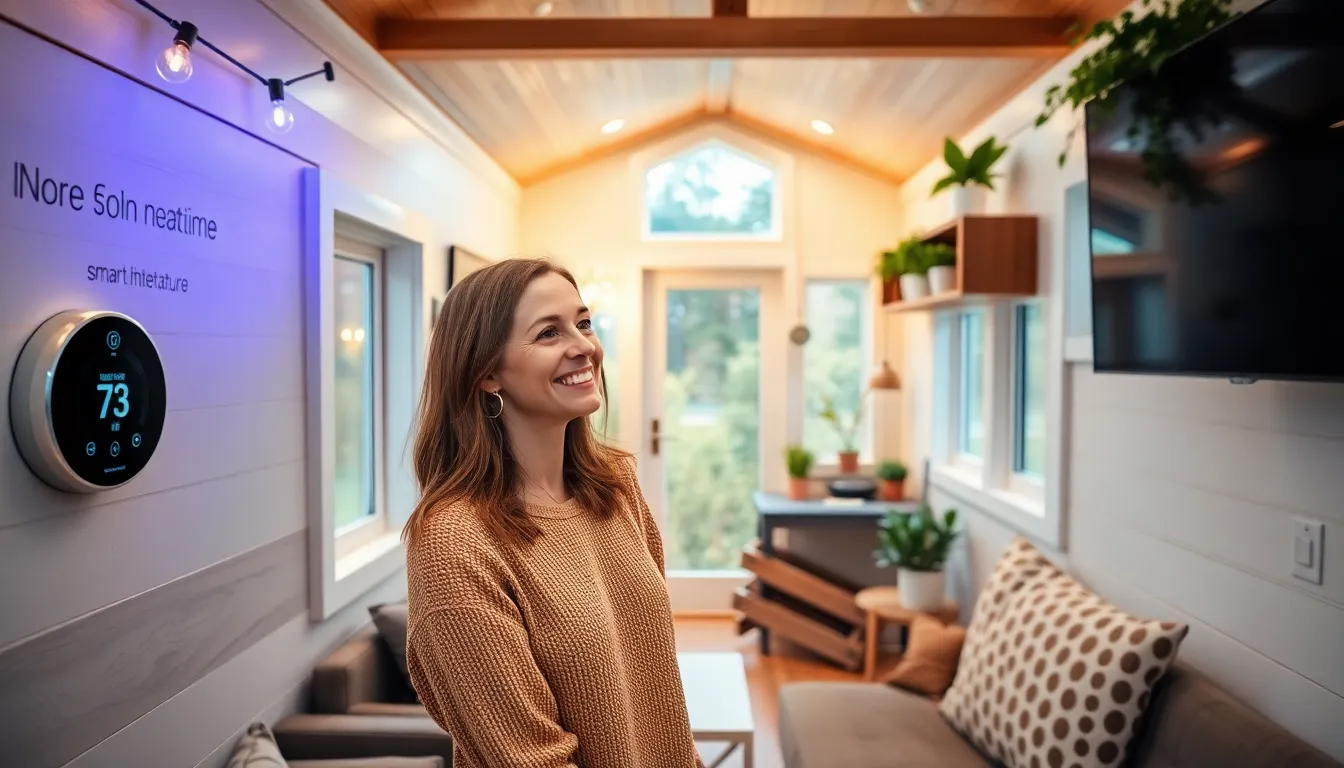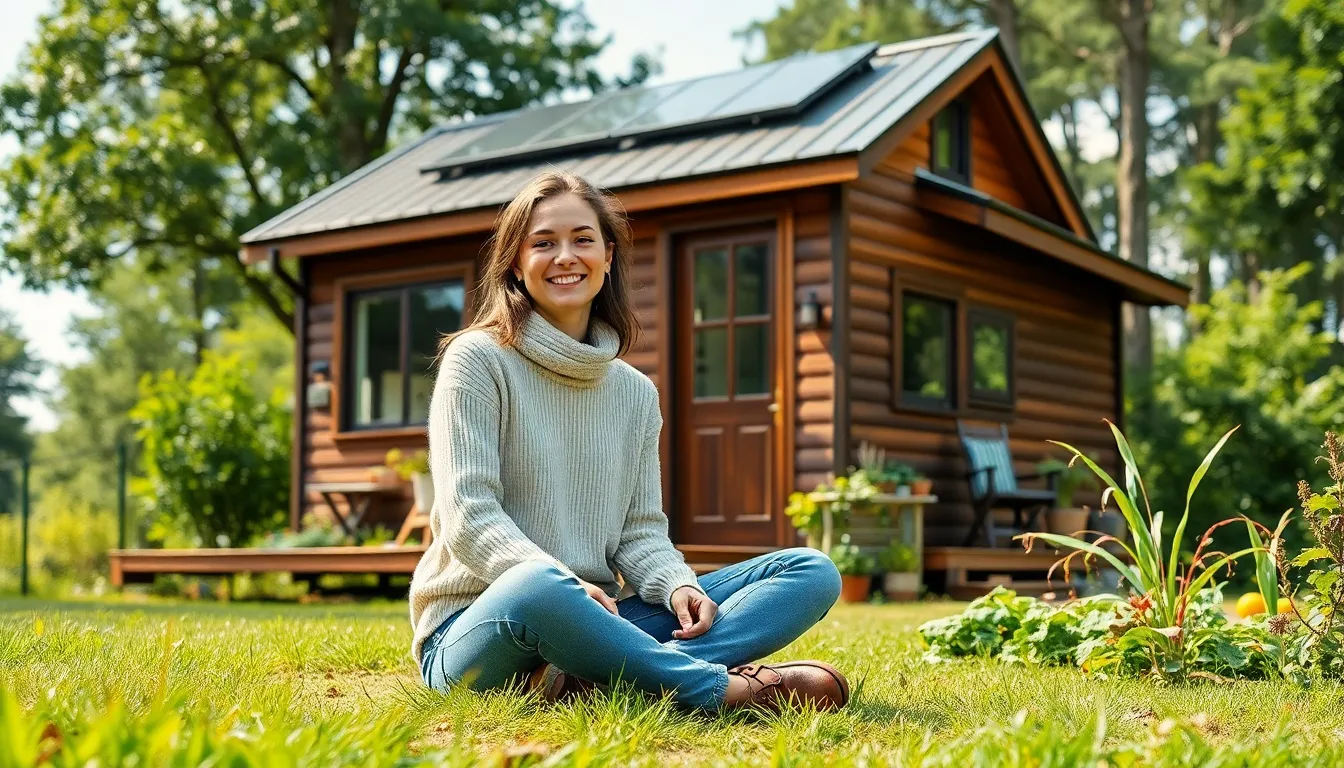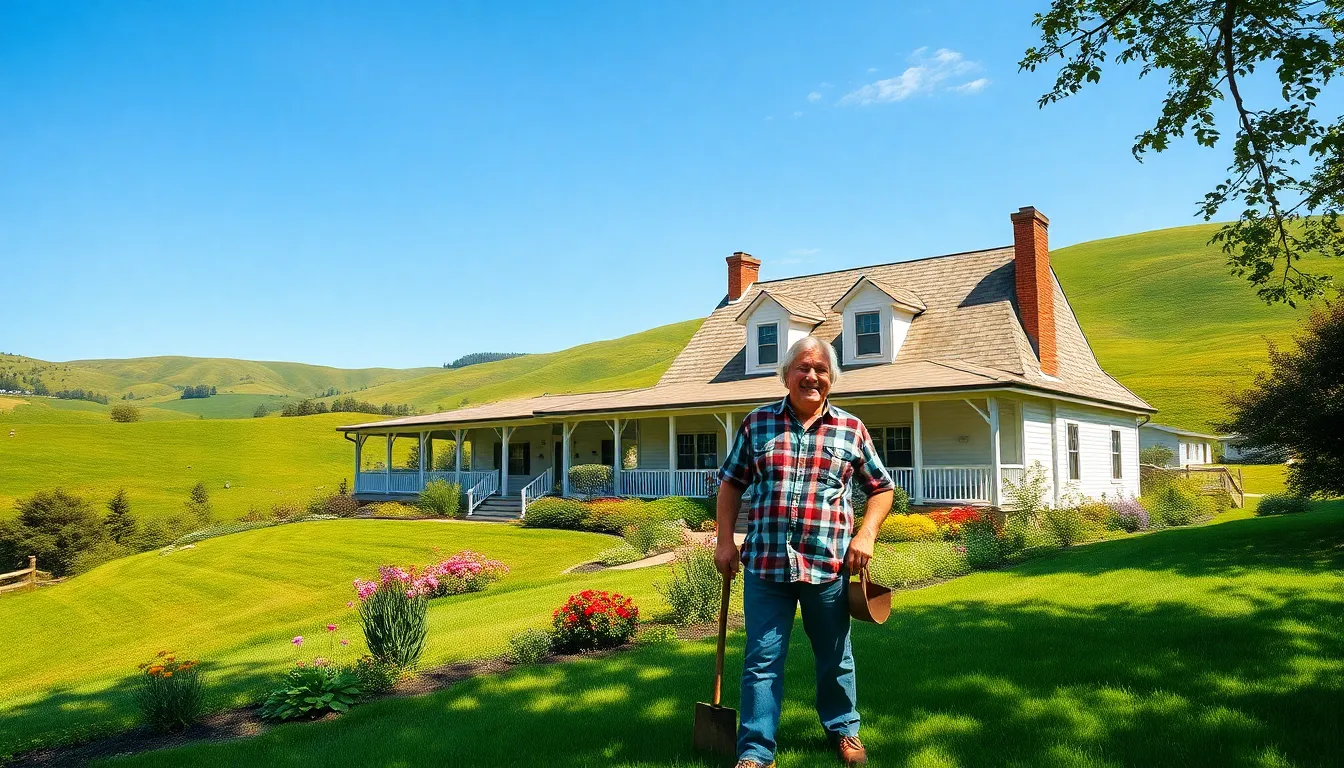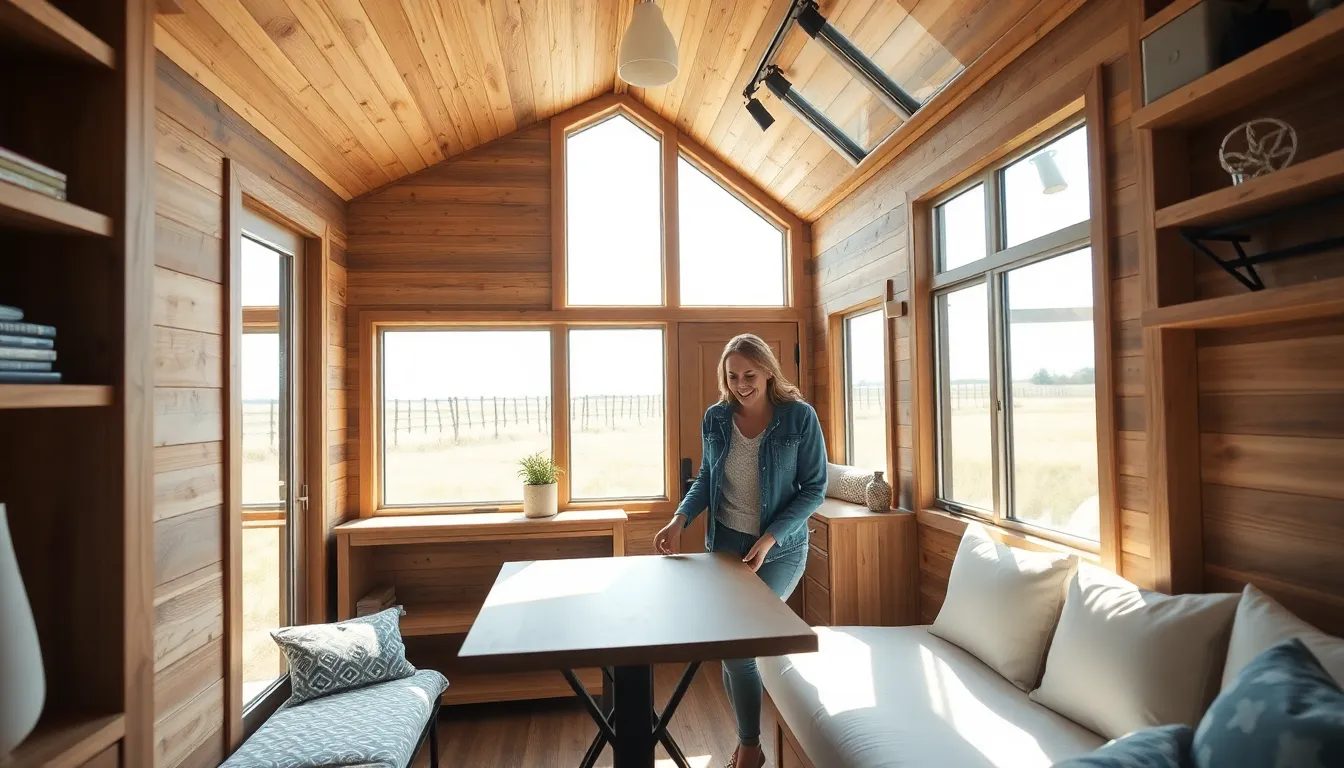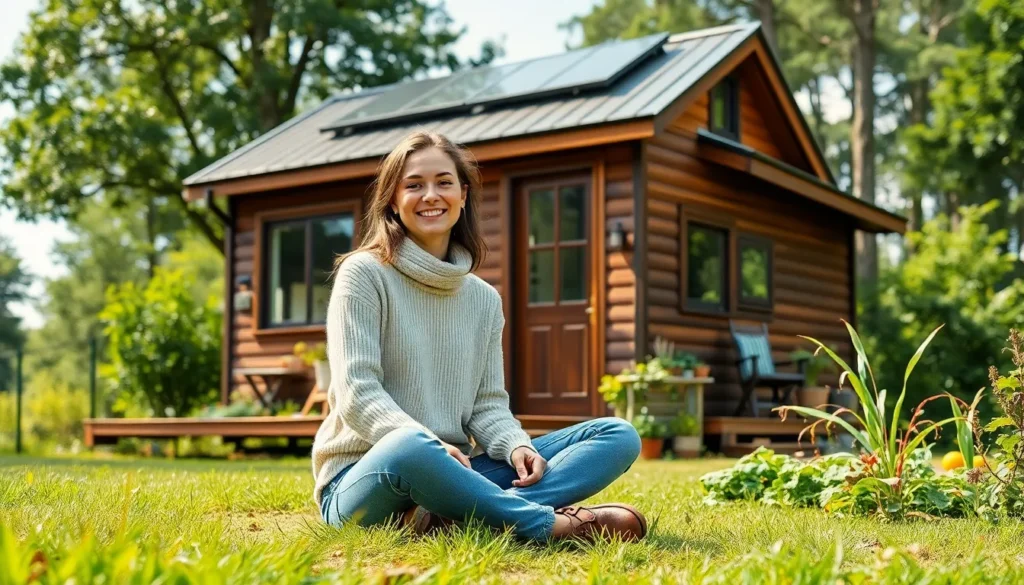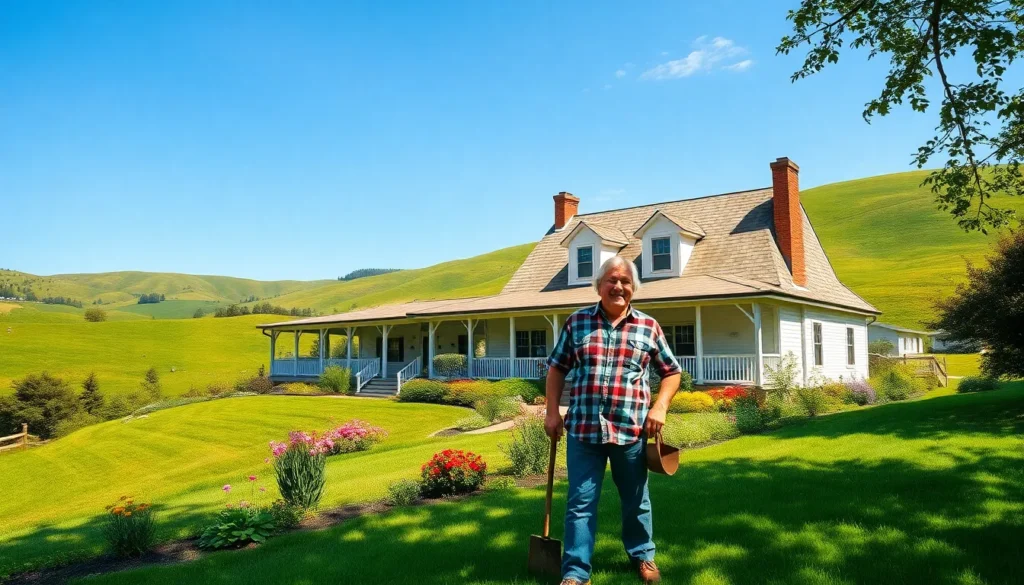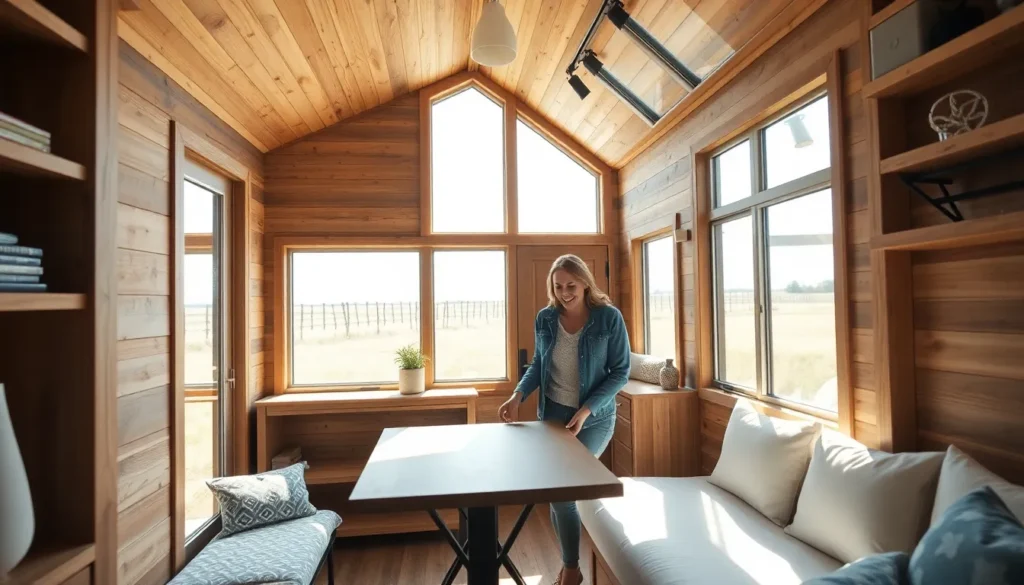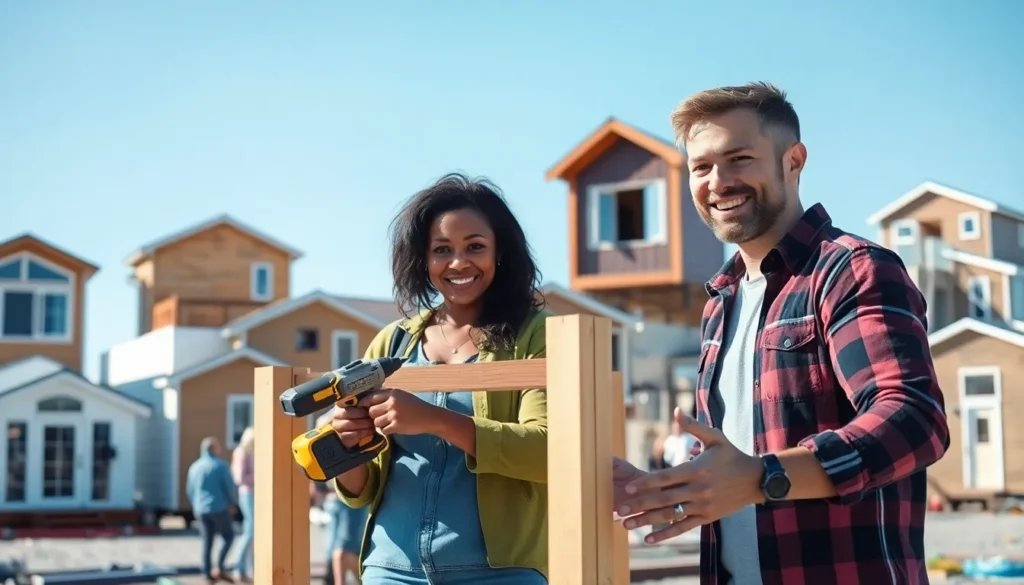Tiny homes are redefining modern living, offering a minimalist lifestyle without sacrificing comfort. As these compact spaces gain popularity, home automation emerges as a game-changer, enhancing convenience and efficiency. By integrating smart technology, tiny homeowners can maximize their limited space while enjoying the benefits of a connected home.
Imagine controlling lighting, temperature, and security systems with just a few taps on a smartphone. Home automation not only simplifies daily tasks but also optimizes energy use, making tiny homes more sustainable. With innovative solutions tailored for smaller living spaces, homeowners can create a harmonious blend of technology and design, proving that even the tiniest homes can be smart and stylish.
Table of Contents
ToggleOverview of Home Automation
Home automation transforms tiny homes into efficient living spaces through smart technology. Homeowners control lighting, temperature, security systems, and appliances from a centralized platform, enhancing usability.
Benefits of Home Automation
- Energy Efficiency: Smart thermostats and lighting systems adjust usage based on occupancy, reducing energy consumption.
- Convenience: Voice-activated devices allow for hands-free management of home functions, saving time.
- Security: Smart cameras and doorbells provide real-time surveillance, increasing safety in compact spaces.
- Comfort: Automated window shades and climate controls maintain a pleasant atmosphere while minimizing energy costs.
Key Features of Home Automation Systems
- Integration: Systems connect various devices into a single network, allowing seamless communication and control.
- Customization: Homeowners can tailor automation settings to fit personal routines and preferences.
- Remote Access: Control systems remotely via smartphones or tablets, ensuring functionality while away from home.
Popular Home Automation Products for Tiny Homes
- Smart Speakers: Devices like Amazon Echo or Google Home facilitate voice control of home systems.
- Smart Plugs: Allow control of appliances remotely, enabling energy management and convenience.
- Smart Lighting: Systems like Philips Hue adjust brightness and color, enhancing ambiance in small areas.
- Smart Locks: Provide keyless entry and monitoring capabilities, offering both security and ease of access.
Home automation in tiny homes exemplifies modern living’s evolution, combining practicality with technological innovation. It directs efforts towards sustainable, efficient systems that maximize the utility of limited space.
Benefits of Home Automation in Tiny Homes
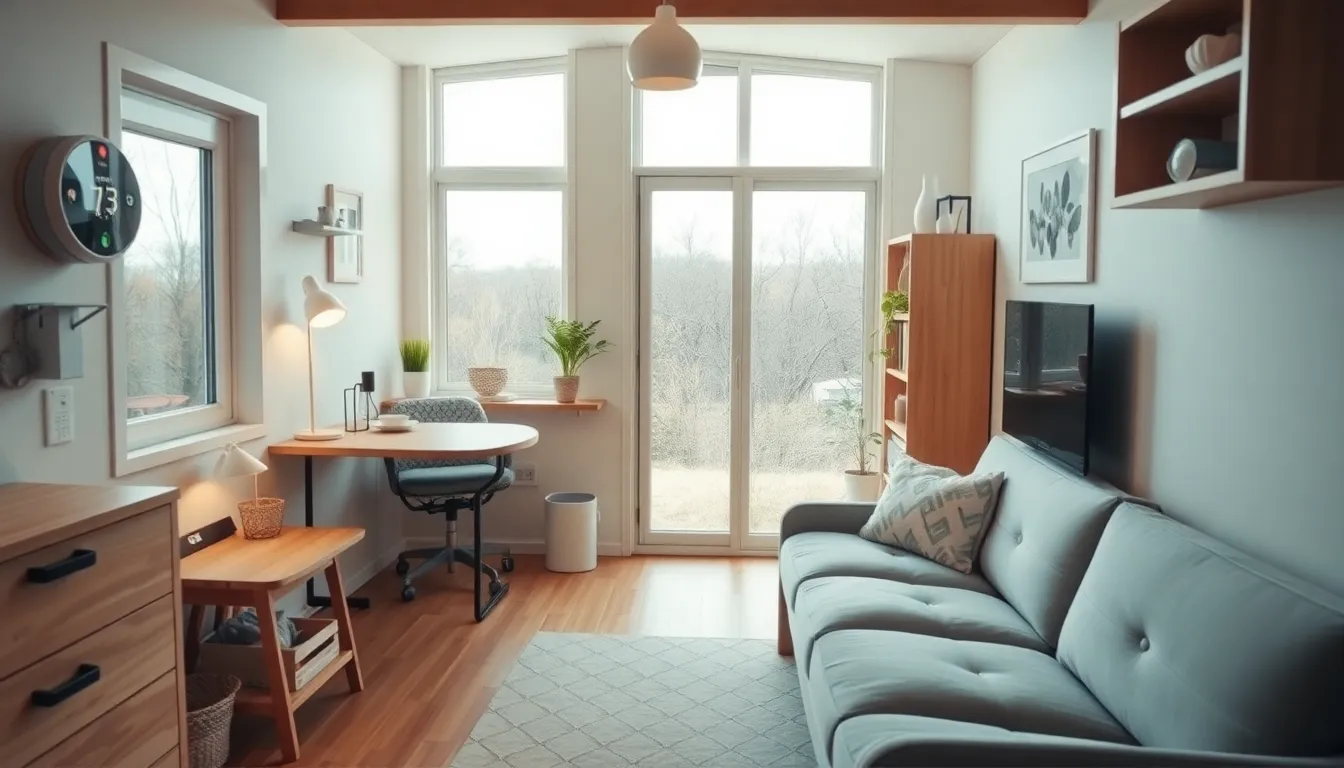
Home automation in tiny homes offers substantial advantages, enhancing both efficiency and comfort. By integrating smart technology, homeowners experience greater control over their living spaces.
Energy Efficiency
Energy efficiency stands as a primary benefit of home automation in tiny homes. Smart thermostats allow for precise temperature control, adapting to occupants’ schedules and optimizing energy consumption. LED lighting systems enable homeowners to program lights, reducing unnecessary electricity usage. Smart plugs and appliances can automatically power down when not in use. According to the U.S. Department of Energy, homes can save up to 10-15% on energy bills with smart technology. Automation not only reduces costs but also contributes to a smaller carbon footprint, aligning with the sustainability goals of many tiny home owners.
Space Optimization
Space optimization proves vital in tiny homes where every square foot counts. Home automation systems facilitate the compact design of living spaces by integrating multiple functions into single devices. For instance, smart speakers can control lighting, music, and security systems, minimizing the need for additional devices. Automated furniture, such as expandable tables or foldable beds, can maximize functionality without sacrificing style. By using customizable layouts and remote control features, residents can effortlessly adjust their environments. This level of adaptability enhances usability and comfort, showcasing how smart technology transforms limited spaces into efficient and stylish homes.
Popular Home Automation Technologies
Home automation technologies enhance the functionality of tiny homes, offering efficiency and convenience. Various systems work together seamlessly to improve the living experience, promoting sustainability and comfort.
Smart Lighting Systems
Smart lighting systems allow homeowners to control lighting through mobile apps or voice commands. Features include:
- Scheduling: Set specific times for lights to turn on or off, aiding energy conservation.
- Dimming: Adjust light intensity to create the desired atmosphere while saving power.
- Color Control: Modify color temperatures to improve mood or productivity.
Products like Philips Hue and LIFX offer customizable options that fit various lifestyles while optimizing energy use.
Smart Thermostats
Smart thermostats offer precise temperature control, minimizing energy consumption in tiny homes. Key functions include:
- Learning Algorithms: These devices learn user preferences and adjust the climate accordingly, maximizing comfort.
- Remote Access: Homeowners can manage temperature settings via smartphone apps, providing convenience and efficiency.
- Energy Reports: Detailed usage insights help homeowners identify patterns and adjust habits to save on heating and cooling costs.
Devices such as Nest and Ecobee are popular choices for their adaptability to small spaces.
Security Systems
Security systems enhance peace of mind for tiny homeowners, offering real-time monitoring and alerts. Important features include:
- Smart Cameras: Keep an eye on properties with high-definition video streaming accessible via mobile devices.
- Smart Locks: Provide keyless entry and grant temporary access to visitors through mobile apps.
- Motion Sensors: Detect movement and send alerts, increasing overall security.
Brands like Ring and August specialize in compact, easy-to-install security solutions ideal for tiny living.
Challenges of Implementing Home Automation
Implementing home automation in tiny homes presents unique challenges that homeowners must navigate. These challenges include space constraints and budget considerations.
Space Constraints
Tiny homes offer limited space, which complicates the installation and integration of home automation systems. All devices must fit efficiently without overcrowding. Hefty equipment, like traditional hubs, appears cumbersome. Smart devices should be compact and versatile, fitting seamlessly into existing layouts. Prioritizing multifunctional devices, such as smart speakers that also serve as hubs, optimizes space. Homeowners frequently face the challenge of reducing clutter while maintaining aesthetic appeal. Selecting sleek, integrated solutions can enhance usability in confined living areas.
Budget Considerations
Budget considerations present significant hurdles for tiny homeowners aiming to implement home automation. Quality smart devices often carry a higher initial cost, which can strain limited budgets. Prioritizing essential devices, like smart thermostats or LED lighting, can help manage expenses. Homeowners can benefit from starting with basic automation features and gradually expanding their systems as finances allow. Researching products that offer compatibility with multiple platforms also aids in reducing long-term costs, ensuring flexibility in future upgrades.
Future Trends in Home Automation for Tiny Homes
The future of home automation in tiny homes focuses on increased efficiency, sustainability, and enhanced user experiences. Innovations will drive the development of smarter, more integrated systems tailored specifically for small living spaces.
- IoT Integration: Internet of Things (IoT) devices will become increasingly prevalent in tiny homes. These devices facilitate seamless communication between appliances, lighting, heating, and security systems, optimizing performance while minimizing energy use.
- Energy Management Systems: Enhanced energy management solutions will likely emerge, enabling homeowners to monitor and manage their energy consumption in real time. These systems adjust automatically based on usage patterns, promoting energy savings and sustainability.
- Voice Activation: Voice-activated technology will gain further traction. Smart speakers and home assistants will provide more robust control over home environments, offering intuitive access to various systems through simple voice commands.
- Mobile App Customization: Custom mobile applications will allow homeowners to personalize their home automation experience. Features will include tailored schedules, individual device control, and real-time alerts, enhancing overall convenience.
- Advanced Security Innovations: Enhanced security solutions will protect tiny homes better. Biometric locks, smart cameras with advanced AI detection, and integrated alarm systems will ensure peace of mind for homeowners.
- Modular Automation Solutions: Modular systems will allow for the incremental addition of devices. Homeowners can easily integrate new technologies as they become available, adapting their systems without major overhauls.
- Sustainable Materials and Technology: The development of eco-friendly smart devices will align with the sustainability goals of tiny living. Products made from sustainable materials will support an environmentally conscious lifestyle while providing the technological benefits of modernization.
- Smart Furniture: Innovations in smart furniture will optimize space. Multi-functional furniture, such as smart tables and adjustable beds, will integrate technology without compromising style or utility.
- Home Health Automation: Future systems may include health monitoring capabilities. Devices could track air quality, humidity, and other environmental factors that impact well-being, empowering homeowners to create healthier living spaces.
- Cost-Effective Solutions: Affordability will remain a focus. Emerging technologies and competitive offerings will make smart home automation more accessible for tiny homeowners, encouraging widespread adoption.
These trends will significantly enhance the functionality and appeal of tiny homes. By integrating advanced technologies, tiny living spaces will become even more efficient, secure, and sustainable, transforming how individuals experience modern living.
Home automation is revolutionizing the tiny home experience by merging technology with minimalist living. By integrating smart systems, homeowners can maximize comfort and efficiency in their limited spaces. This technological advancement not only simplifies daily tasks but also aligns with sustainability goals, making tiny homes more eco-friendly.
As innovations continue to emerge, the future of home automation in tiny homes looks promising. With advancements in energy management and modular solutions, homeowners can enjoy enhanced functionality while maintaining a stylish environment. Embracing these smart technologies will undoubtedly transform how individuals perceive small living, proving that less can indeed be more.

